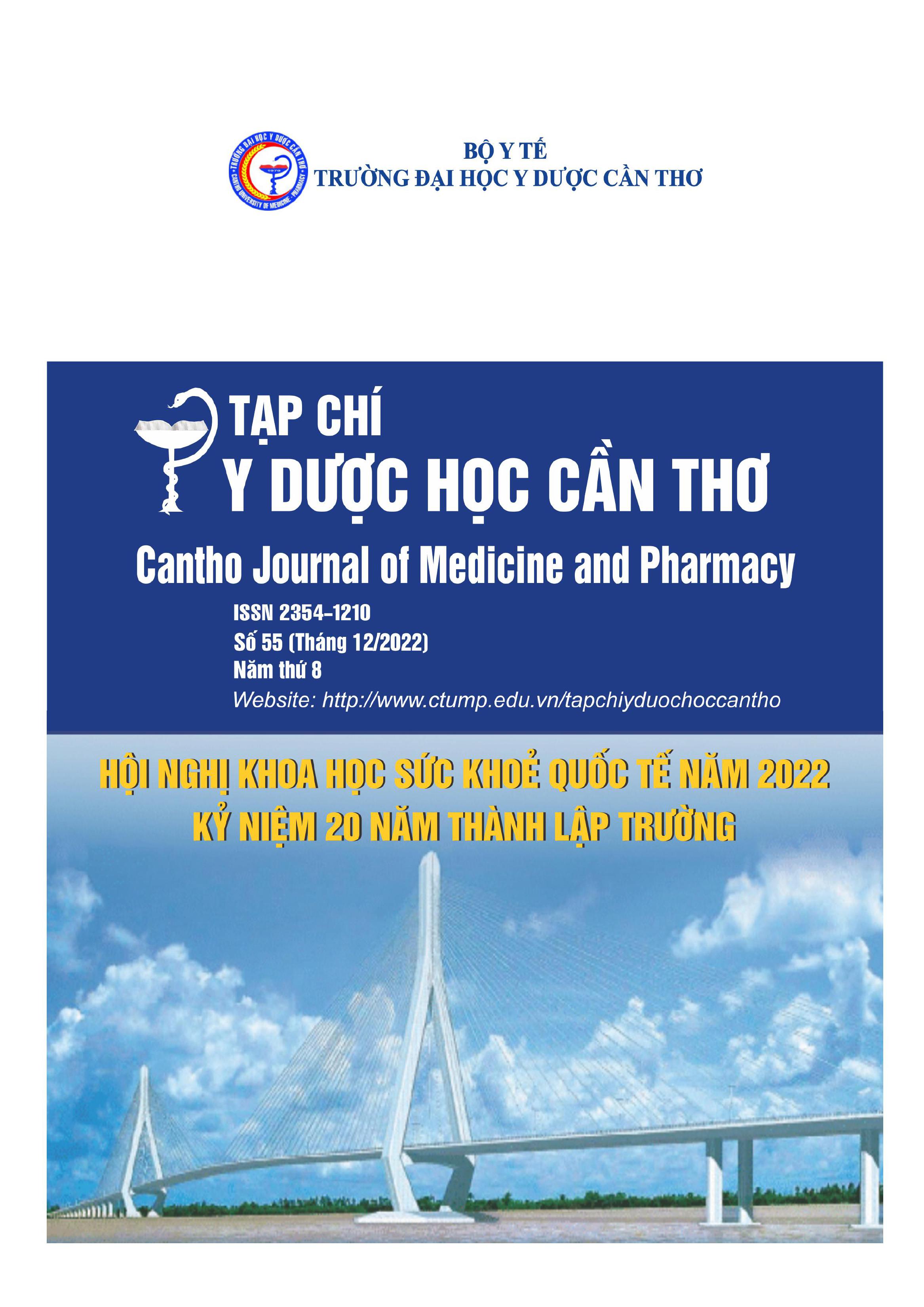POSTPARTUM DEPRESSION IN HIGH RISK PREGNANCT WOMEN IN CAN THO CENTRAL GENERAL HOSPITAL
Main Article Content
Abstract
Background: Depression in postpartum women, especially in hight risk pregnant women, affects physical and mental health of mothers and children, and even endangers the lives of mother and children. Objectives: To determine the proportion of postpartum depression and some relative factors among high-risk pregnant women in Can Tho Central general hospital from 2019 to 2020. Materials and methods: A cross-sectional study was conduted among 452 high risk pregnancies in Obstertric department, Can tho Central general hospital. These women were examined and assessed for high-risk pregnancies and interviewed on the day of discharge via to the Beck scale. Results: Postpartum depression proportion in high-risk pregnancies was 19.03%, mild level accounted for 68.6%, average level was 29.1% and severe level was 2,3%. Some factors that increased the risk of postpartum depression were economic status with OR = 3.2 with 95% confidence interval: 3.0-5.8; accommodation (OR = 2.1; 95% confidence interval: 1.2 - 4.9); work pressure (OR = 3.4; 95% confidence interval: 1.5- 5.3). Conclusions: Depression in high-risk pregnant women was high and related factor found were lower economic, living in urban area and hight work pressure.
Article Details
Keywords
Postpartum depression, risk pregnancy, related factors
References
2. Nguyễn Thanh Hiệp và Lê Minh Nguyệt (2007), Tình trạng trầm cảm sau sinh ở những thai phụ có thai kỳ nguy cơ cao đến khám tại bệnh viện Từ Dũ. Tạp chí Y học thành phố Hồ Chí Minh, 14 (2), tr.69-74.
3. Dương Thị Kim Hoa (2014), Nghiên cứu tình hình rối loạn trầm cảm sau sinh và các yếu tố liên quan ở phụ nữ có chồng tại quận Hải Châu, thành phố Đà Nẵng. Luận văn thạc sĩ, Trường Đại học Y Dược Huế.
4. Lương Bạch Lan và Huỳnh Nguyễn Khánh Trang (2009), Tỷ lệ và các yếu tố liên quan đến trầm cảm sau sinh ở bà mẹ có trẻ gửi dưỡng nhi tại bệnh viện Hùng Vương. Tạp chí Y học thành phố Hồ Chí Minh, (13), tr.1-5.
5. Đặng Thị Thùy Mỹ (2018), Dấu hiệu trầm cảm sau sinh của các bà mẹ tại bệnh viện sản nhi Trà Vinh. Tạp chí y học thành phố Hồ Chí Minh, 22 (5), tr.110-113.
6. Nguyễn Thị Thảo Tâm (2019), Trầm cảm sau sinh và các yếu tố liên quan ở phụ nữ sau sinh trong vòng 6 tháng tại huyện Trảng Bom, tỉnh Đồng Nai. Tạp chí Y học, 23 (5), tr.268-274.
7. Nguyễn Thị Thìn (2018), Nghiên cứu tỷ lệ trầm cảm sau sinh và các yếu tố liên quan ở các bà mẹ tại thành phố Tam Kỳ tỉnh Quảng Nam. Luận văn chuyên khoa cấp II, Trường Đại học Y Dược Huế.
8. Nguyễn Thị Kim Thúy, Dương Mỹ Linh (2017), Nghiên cứu tình hình trầm cảm và các yếu tố liên quan ở thai phụ có thai kỳ nguy cơ cao tại bệnh viện Phụ sản thành phố Cần Thơ. Tạp chí Y Dược Cần Thơ, (11), tr. 256-262
9. Đinh Thị Tố Trinh (2003), Tỷ lệ trầm cảm sau sinh và các yếu tố liên quan. Luận văn chuyên khoa cấp II, Đại học Y Dược thành phố Hồ Chí Minh.
10. Aron T. Beck (1996), Beck Depression Inventory, The psychological corporation, pp. 1-5.
11. Jitendra Kumar Kushwaha (2016), Beck Depression Inventory: Hindi Translation and Psychometric properties for the Students of Higher Education. Journal of Research in Humanities and Social Science, 4(9), pp.39-49.
12. Nancy Byatt, et al. (2014), Depression and anxiety among high-risk obstetric inpatients. Gen Hosp Psychiatry, 35(2), pp.112-116.
13. World Health Organization (2017), Depression and Other Common Mental Disorders. WHO, pp.4-14.


